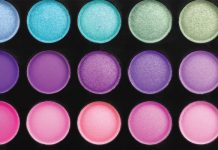Your skin tone doesn’t matter; summer demands a sun-kissed glow! Get rid of the pale office look by using our tips to minimise the negative effects of tanning.
1) How it works
 Firstly, you must understand the process of skin darkening. A tan is a shield from UVA and UVB rays. Picture this — each skin cell creates a barrier to avoid the radiation from entering. They keep adding layers of protection depending on the time you are exposed to the sun, making your skin appear darker. Remember; prolonged exposure to harmful rays increase the likelihood of cancerous cells.
Firstly, you must understand the process of skin darkening. A tan is a shield from UVA and UVB rays. Picture this — each skin cell creates a barrier to avoid the radiation from entering. They keep adding layers of protection depending on the time you are exposed to the sun, making your skin appear darker. Remember; prolonged exposure to harmful rays increase the likelihood of cancerous cells.
2) Tanning magnets
Water and snow reflect and intensify UV rays from the sun, giving you double the protection while swimming or skiing. Opt for water-resistant sunscreen if you’re at the pool or beach. Don’t forget that sand is also a reflector. It is important to apply sunscreen even if you’re in the shade. Re-apply the product more often if you get into the water.
3) Expert advice
If you’re going to get a tan, consult a dermatologist first! A professional can check your skin for signs of cancer and give specific instructions for the best way to tan based on your skin type. You should be examined at least once a year, especially if you live on a sun-kissed island in the Middle East.
4) A matter of time
The timing between 10am and 4pm is when the radiation is highest; so avoid staying out for long periods during these hours. The perfect tan takes time; don’t attempt to get the desired tone in one day. A safe amount of time would be an hour a day until you reach the exact tone you’re looking for.
5) Maintain the colour
The only way to make your tan last longer is to apply a generous layer of body lotion regularly. This will reduce the number of dead cells and hydrate the skin. Some products have ingredients that repair damaged skin as well.
6) FEAR the sun?
Use a self tanner. There are lotions, creams and sprays in the market that will dye your skin and create the illusion of a tan. Sunless tanners have dihydroxyacetone in its formula, which dye the dead cells on your body. The effect is temporary. For a better result, exfoliate your skin to remove old dead cells.
7) Take cover
SPF indicates the amount of radiation that penetrates your skin. If you have a product with SPF 30, it means that 1/30th of the sun’s UV rays are in contact with your skin. A number lower than SPF 15 won’t really protect your skin; opt for products with a higher number. Your shoulders, nose and arms are the body parts most in contact with the sun; so they should get a thicker layer.
8) Accelerate the process
You can apply tanning oils to improve the darkening process. These products usually contain chemicals that intensify the rays and tan your skin faster. Its purpose is to concentrate the radiation and speed up the shielding process of your skin. However, only use oils which offer sun protection of SPF 15
and higher.
9) In case of burns
Overexposure can cause redness on the skin and makes it very sensitive. To treat sunburn, apply cooling and soothing after-sun products that come with anti-inflammatory botanical ingredients, like aloe vera, cucumber and green tea. These cool down the burnt skin and prevent peeling. Cold baths are recommended to alleviate the heat and pain. Drink plenty of water!
10) Wear sunscreen
Always apply sun protection before tanning — always! Exposing your skin to the sun without sunscreen is an invitation for skin cancer. There are two products in the market: sun block and sunscreen. The first completely blocks out UV rays, while the second allows some UV rays to penetrate the surface of the skin. If you are looking to tan, pick the second option; apply it every two hours.





































